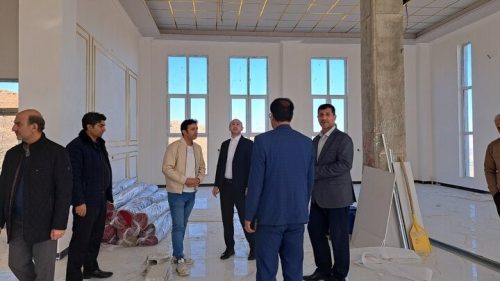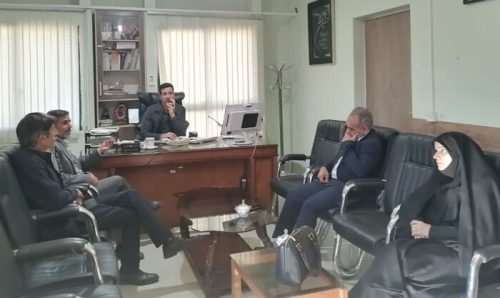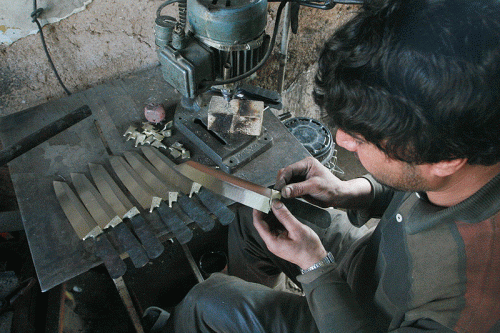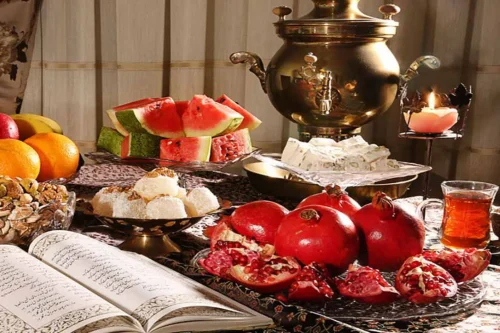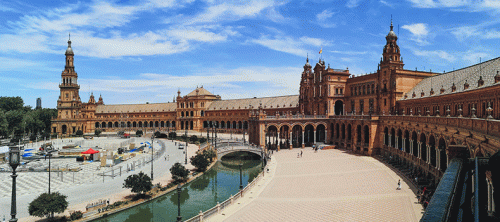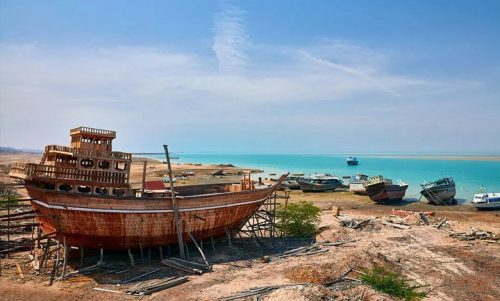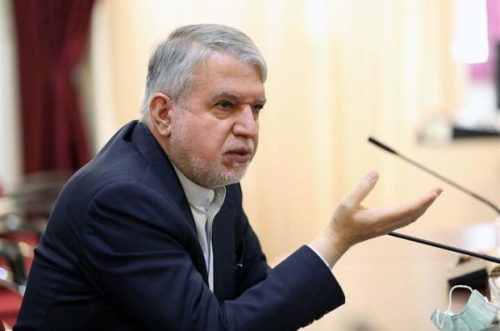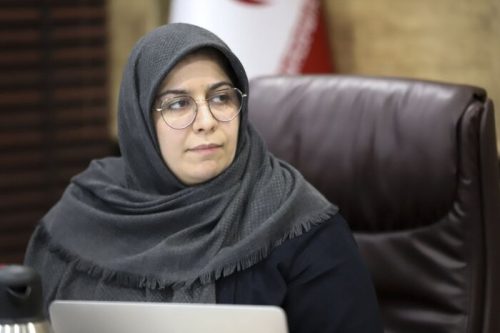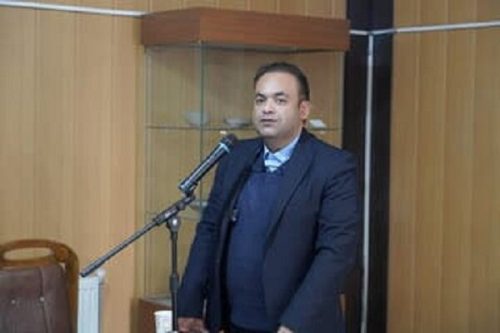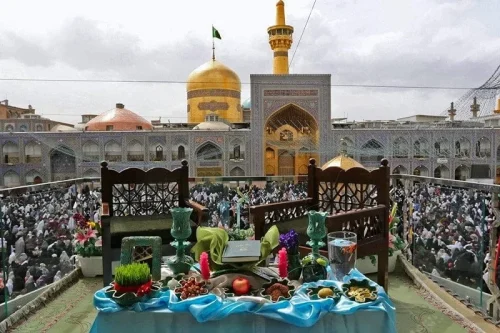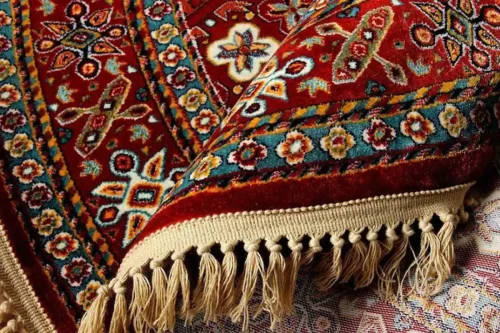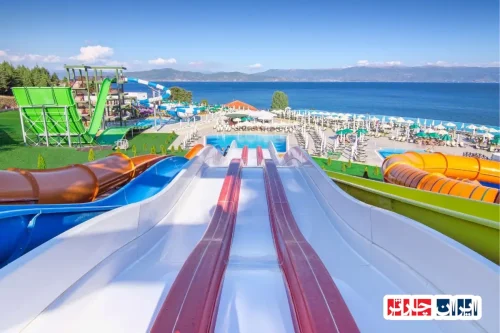News Source : https://www.irna.ir/news/85675323/%D9%85%D8%B1%D9%85%D8%AA-%D8%A7%D8%B6%D8%B7%D8%B1%D8%A7%D8%B1%DB%8C-%D8%AE%D8%A7%D9%86%D9%82%D8%A7%D9%87-%D8%A7%D8%A8%D9%88%D8%B3%D8%B9%DB%8C%D8%AF-%D8%A7%D8%A8%D9%88%D8%A7%D9%84%D8%AE%DB%8C%D8%B1-%D8%AF%D8%B1-%DA%A9%D9%88%D9%87%D8%A8%D9%86%D8%A7%D9%86-%D8%A2%D8%BA%D8%A7%D8%B2-%D8%B4%D8%AF
Emergency Restoration of Abusaeid Abolkhair’s Monastery in Koohbanan Begins
The emergency restoration of Abusaeid Abolkhair’s monastery in Koohbanan has commenced, underscoring the high significance of this historic site for the cultural heritage of Kerman Province. This urgent action was taken following the 2017 earthquake that damaged the structure. Currently, the emergency restoration of Abusaeid Abolkhair’s monastery in Koohbanan involves debris removal, structural reinforcement, and traditional insulation to eliminate existing hazards. The Head of the Cultural Heritage, Tourism, and Handicrafts Office of Koohbanan emphasized the importance of preserving and maintaining this monument for future generations. Additionally, the current phase of restoration work focuses on pointing and eliminating risks from damaged areas, which is part of the emergency restoration of Abusaeid Abolkhair’s monastery in Koohbanan. We hope with these measures, the monastery will return to its original historical condition and continue its role as a place of learning for prominent mystics.
Start of Emergency Restoration of Khaneghah Abu Saeed Abu al-Khair in Kuhbonan
With an official announcement from the Head of Cultural Heritage, Tourism and Handicrafts of Kuhbonan, the emergency restoration of Khaneghah Abu Saeed Abu al-Khair in the area has begun. This urgent action, following the 2017 earthquake that damaged the structure, is a significant step in preserving and maintaining the cultural heritage of Kerman province. The goal is to restore the Khaneghah to its original state and preserve its role as a place for the study of great mystics.
Restoration Operations Include Debris Removal and Strengthening
The emergency restoration operations at Khaneghah Abu Saeed Abu al-Khair in Kuhbonan involve various stages including debris removal, strengthening of the structure, and traditional insulation. Specialist teams in this project are utilizing modern techniques alongside traditional methods to eliminate the existing dangers in the structure and reinforce it. These actions aim to prevent unfortunate incidents in the future and maintain the historical authenticity of the structure.
Importance of Preserving Khaneghah for Cultural Heritage
Khaneghah Abu Saeed Abu al-Khair is one of the prominent historical landmarks of Kerman province that plays a crucial role in preserving and promoting the cultural heritage of the area. Preserving and maintaining this structure is important not only as an architectural landmark but as a sacred place for mystics and students of mysticism. The emergency restoration ensures the cultural and historical values of the Khaneghah are preserved for future generations.
History of Khaneghah Abu Saeed Abu al-Khair in the Seljuk Era
Khaneghah Abu Saeed Abu al-Khair in Kuhbonan was built based on the mihrab plasterwork from the Seljuk era. In the past, it served as a place for seclusion, worship, and study of great mystics such as Burhan al-Din Kuhbonani and Abu Ishaq Kuhbonani. The rich history of this Khaneghah highlights its importance in different historical periods of Iran, and the emergency restoration plays a significant role in preserving this history.
Role of the Head of Cultural Heritage in the Emergency Restoration Project
The Head of Cultural Heritage, Tourism and Handicrafts of Kuhbonan, by announcing the start of the emergency restoration of Khaneghah Abu Saeed Abu al-Khair, demonstrates the department’s commitment to preserving the cultural heritage of Kerman province. Emphasizing the importance of this structure for future generations and the necessity of emergency restoration, he has declared his support for the project. His leadership in guiding the restoration teams and ensuring the correct implementation of various phases of the restoration operations is extremely important.
Use of Traditional Methods in Insulating the Structure
In the emergency restoration operations of Khaneghah Abu Saeed Abu al-Khair, the use of traditional methods in insulating the structure is a standout feature. These methods not only help preserve the historical authenticity of the structure but also use natural materials compatible with the original structure. Traditional insulation increases the durability of the structure and protects it against environmental factors.
Eliminating Risks and Jointing for Structure Safety
One of the main goals of the emergency restoration of Khaneghah Abu Saeed Abu al-Khair in Kuhbonan is eliminating existing risks and jointing in damaged parts of the structure. Implementing these measures strengthens the structure and reduces the risk of collapse or further damage. Proper and precise jointing aids in maintaining the structural safety and prevents further deterioration.
Prospect of Returning Khaneghah to Its Original State
Upon completion of the emergency restoration operations, it is expected that Khaneghah Abu Saeed Abu al-Khair in Kuhbonan will return to its original and historical state. This effort not only helps preserve cultural heritage but also allows it to continue its role as a major tourist attraction and place for the study of distinguished mystics. Returning to its original state signifies the success of the restoration operations and the commitment of related organizations to preserving cultural heritage.
Impact of Emergency Restoration on Tourism and Handicrafts in Kuhbonan
The emergency restoration of Khaneghah Abu Saeed Abu al-Khair in Kuhbonan can positively impact the tourism and handicrafts industry in the region. By restoring and maintaining the historical structure, the likelihood of increasing tourist attraction to Kuhbonan and promoting local handicrafts is enhanced. This leads to economic growth and cultural development in the area, providing new opportunities for artists and craftsmen.
Modern Techniques in Structuring Strengthening
In the emergency restoration operations of Khaneghah Abu Saeed Abu al-Khair in Kuhbonan, modern techniques are being utilized for strengthening the structure. These techniques include contemporary materials and advanced methods to reinforce the structure, which, in addition to preserving architectural authenticity, improve the durability and resilience of the structure against natural disasters. The combination of traditional methods with modern techniques yields efficient and effective results in the restoration of the structure.
FAQ
- Where did the emergency restoration of Khaneghah Abu Saeed Abu al-Khair begin?
- The emergency restoration of Khaneghah Abu Saeed Abu al-Khair began in the northern Kuhbonan county of Kerman province.
- Who announced the emergency restoration of Khaneghah?
- The Head of Cultural Heritage, Tourism, and Handicrafts of northern Kuhbonan in Kerman announced the initiation of the emergency restoration of Khaneghah Abu Saeed Abu al-Khair.
- To whom is Khaneghah Abu Saeed Abu al-Khair attributed?
- Khaneghah Abu Saeed Abu al-Khair is attributed to Sheikh Abu Saeed Fazlullah bin Ahmad bin Muhammad bin Ibrahim Mihani, known as Sheikh Abu Saeed Abu al-Khair.
- When was Khaneghah Abu Saeed Abu al-Khair damaged?
- Khaneghah Abu Saeed Abu al-Khair was damaged in the 2017 earthquake in Kuhbonan.
- What stages does the emergency restoration operation include?
- The emergency restoration operation includes debris removal, structural strengthening, jointing, traditional insulation, and eliminating dangers from damaged points.
- What were the uses of Khaneghah Abu Saeed Abu al-Khair?
- This Khaneghah was once a place for seclusion, worship, and the study of great mystics such as Burhan al-Din Kuhbonani and Abu Ishaq Kuhbonani, as well as many other great spiritual, scientific, and religious figures.
- To which historical period does the structure of Khaneghah Abu Saeed Abu al-Khair belong?
- The structure of Khaneghah Abu Saeed Abu al-Khair dates back to the Seljuk era, as evidenced by its mihrab plasterwork from that period.
- What actions have previously been taken to restore the Khaneghah?
- After the 2017 earthquake, several phases of restoration and revival operations have been conducted on the Khaneghah.
- What roles did Sheikh Abu Saeed Abu al-Khair have in history?
- Sheikh Abu Saeed Abu al-Khair was a renowned Iranian mystic and poet in the 10th and 11th centuries AD, with several historical structures attributed to him.
- Khaneghah Abu Saeed Abu al-Khair is one of the attractions of which province?
- Khaneghah Abu Saeed Abu al-Khair is one of the attractions of Kerman province.
- How far is the center of Kuhbonan county from the city of Kerman?
- The center of Kuhbonan county is 168 km north of the city of Kerman.
- Which spiritual figures have studied at Khaneghah Abu Saeed Abu al-Khair?
- Burhan al-Din Kuhbonani, Abu Ishaq Kuhbonani, and many other prominent spiritual, scientific, and religious figures have studied at this Khaneghah.
- What is the importance of emergency restoration services?
- Emergency restoration services are crucial for the preservation and rescue of this historical structure and prevent further destruction.
- In which centuries did Sheikh Abu Saeed Abu al-Khair live?
- Sheikh Abu Saeed Abu al-Khair lived in the 10th and 11th centuries AD.
- What is the historical background of the Khaneghah building?
- The building of the Khaneghah was constructed based on the mihrab plasterwork from the Seljuk period.
- Which news sources reported this news?
- This news was reported by IRNA.
- Who is responsible for the restoration operation management?
- Mehdi Ahmadi, the public relations officer of the Cultural Heritage, Tourism and Handicrafts Administration in Kerman province, is responsible for the restoration operations.
- How is the restoration of the Khaneghah carried out traditionally?
- The restoration of the Khaneghah is carried out traditionally, including traditional insulation that is compatible with the old architecture and materials of the structure.

